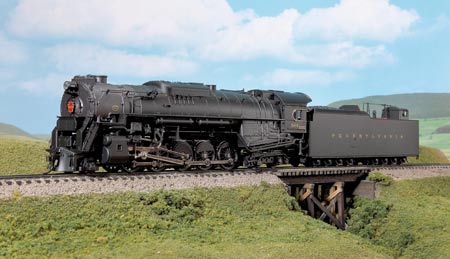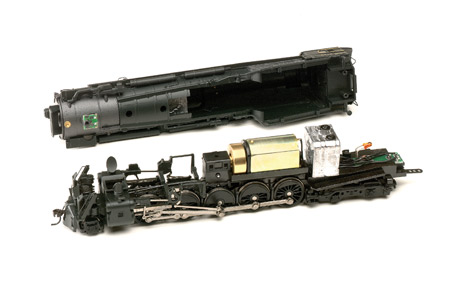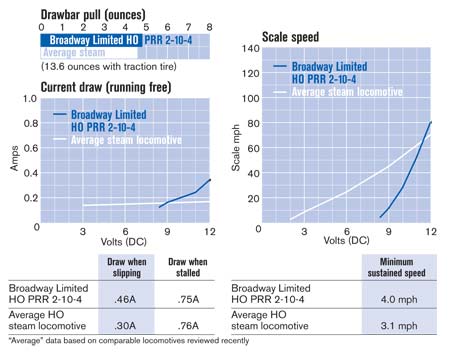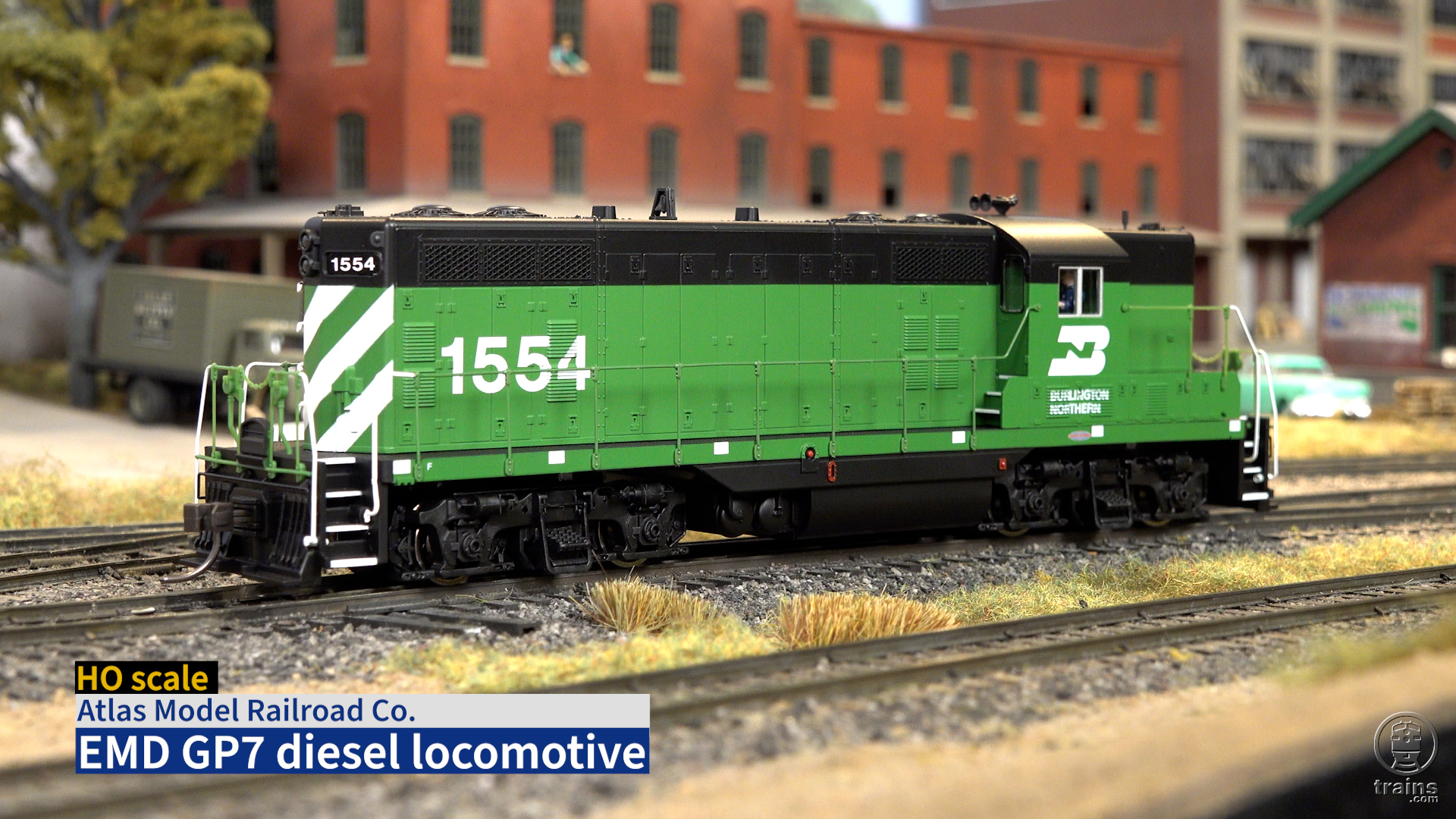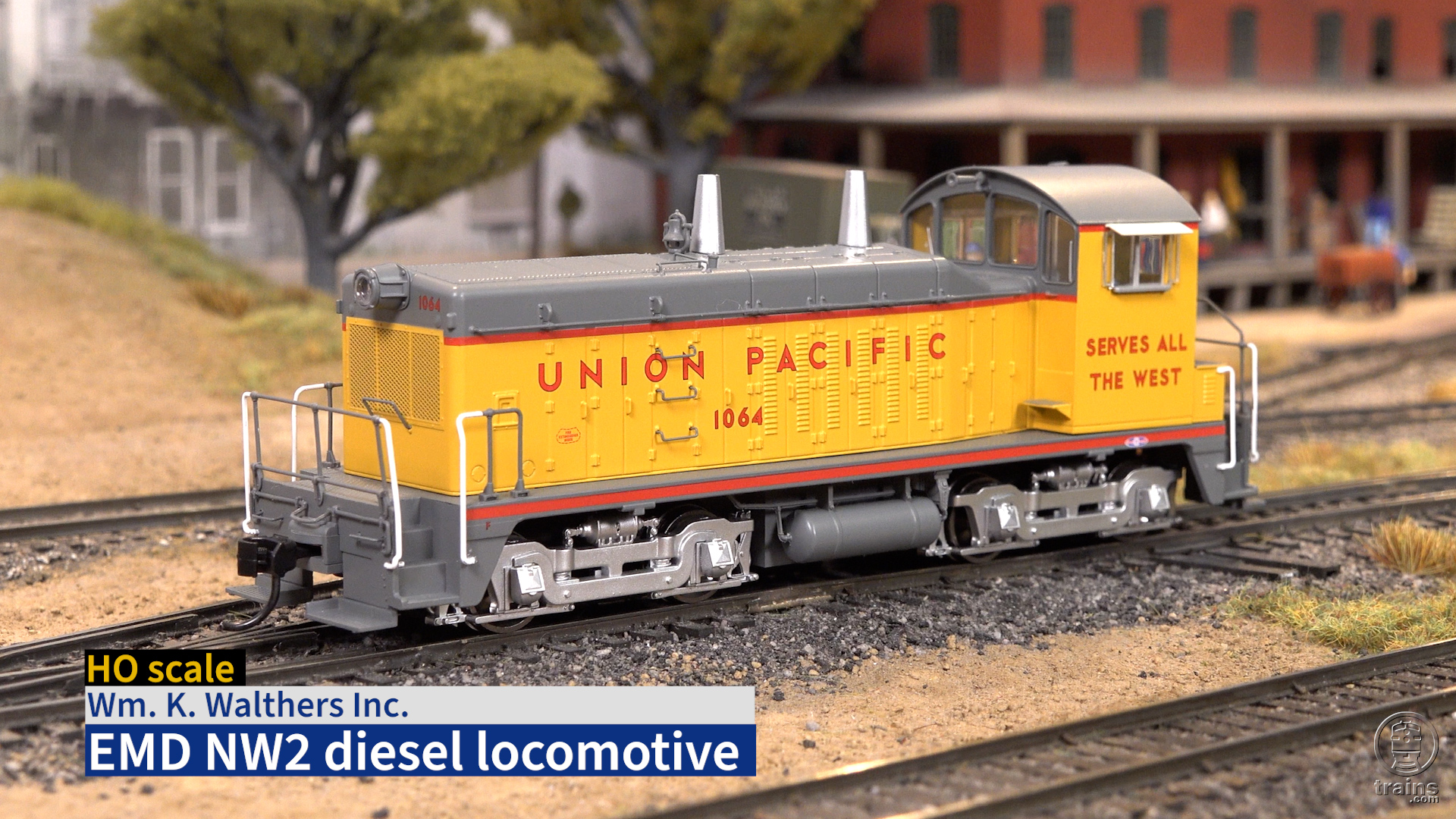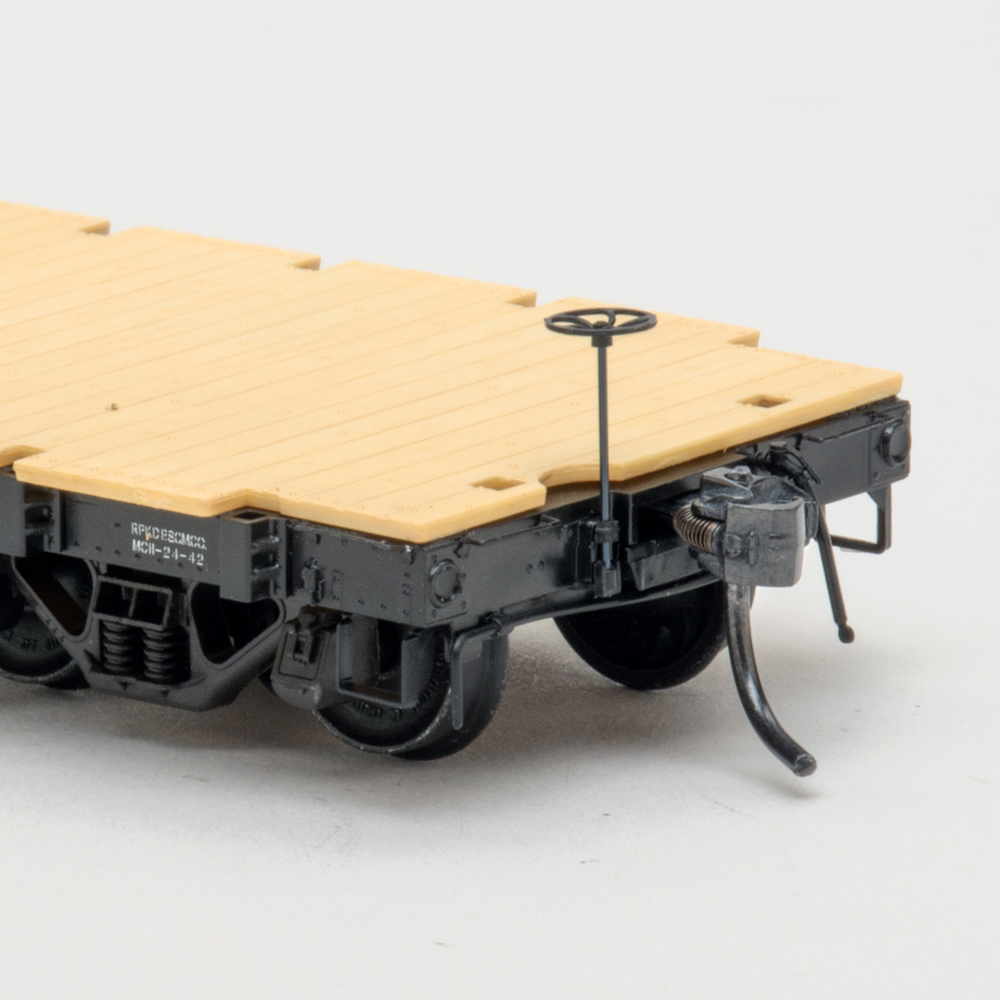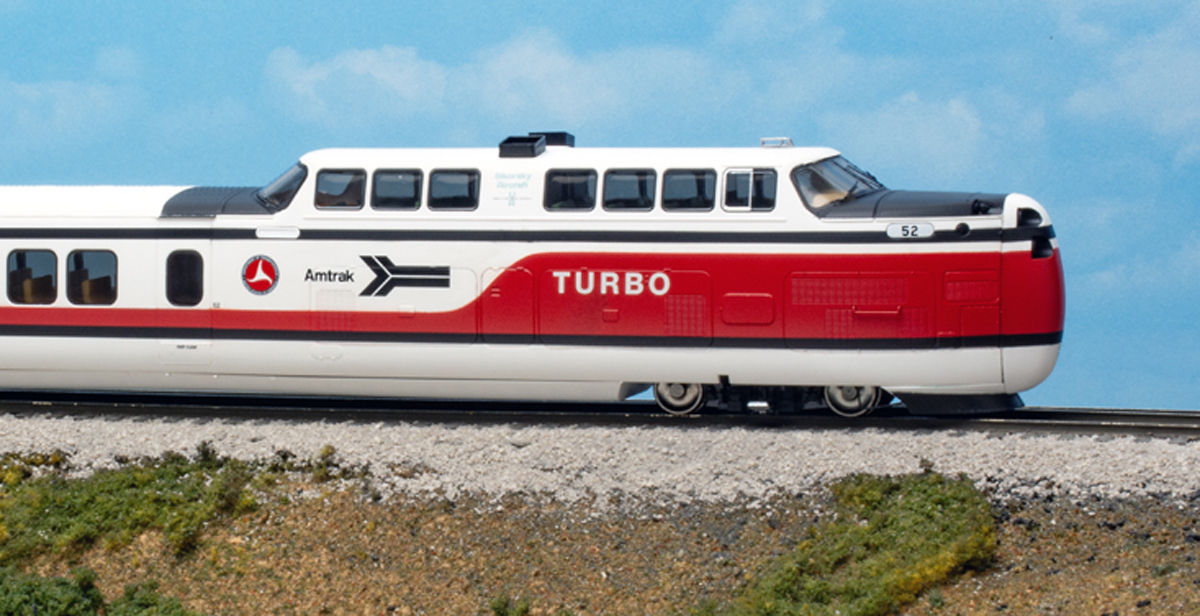War babies. The Pennsylvania RR was caught short of up-to-date freight locomotives to handle the crushing weight of traffic during World War II. It couldn’t get diesels, and the War Production Board (WPB) mandated that new locomotives must follow an existing design. Nine contemporary big engines were considered before a Chesapeake & Ohio 2-10-4 was tested and chosen as the pattern for the Pennsy’s new class J1 locomotives.
The C&O’s Texas types were built by the Lima Locomotive Works as enlarged versions of hte Erie’s Van Sweringen 2-8-4 Berkshires. Some cosmetic modifications appeared on the J1, including a new cab, front end, and a huge tender, which gave them a Pennsy look. The J1s were Pennsy’s largest conventional (not duplex or articulated) steam locomotives capable of handling drag freights or fast merchandise trains. Most were used on the west end of the PRR system through 1956.
Construction of the first 50 J1s was to be split between the PRR’s Altoona shop and Lima, which supplied considerable engineering help and patterns. However the WPB kept Lima building Sherman tanks and Army 2-8-0’s, so all of the J1s were built at Altoona.
A total of 125 2-10-4s were built between December 1942 and October 1944: class J1 locomotives 6150-6174 and 6435-6474, and nos. 6475-6500 in class J1A. According to Eric Hirmanski’s book Black Gold — Black Diamonds (Mileposts Publishing Co., 3963 Dryden Dr., North Olmsted, OH 44070-1927), the primary difference between them was weight. The J1 had a carbon steel boiler and weighed 572,640 pounds, while the J1A had a carbon steel boiler and weighed 574,703 pounds. Otherwise they were virtually identical.
All of the J1As had cast-steel frames, while J1s were built with either fabricated bar frames or cast-steel frames. All of the J’s had stokers and 16-wheel tenders that carried 30 tons of coal and 21,000 gallons of water.
This model closely matches the prototype drawings of the J1 that were published in The Locomotive Cyclopedia (Hundman Publishing Co.) except for the drivers. As we’ve seen in other large steam models, the drivers are a scale 4″ undersize, and the overall driving wheelbase is stretched a scale 6″. This provides additional mechanical clearance so the BLI J1 can negotiate model curves as sharp as 22″ radius, but it looks better on wide radius curves.
A combined control and sound system (concealed within the tender) works on conventional analog DC and on NMRA Digital Command Control (DCC) systems. The volume control for the QSI Quantum sound/control system is under the fireman’s side water hatch on the tender, and the twin downward-facing speakers are mounted on the tender frame. If the system operates erratically or you wish to return to the factory presets, a reset button is located at the rear of the circuit board. To reach it, remove the tender shell. It’s a press fit on the frame, but it’s very snug.
Both the locomotive and the tender feature smoothly applied PRR dark green paint; the tender deck is painted “Freight Car Color,” and the smokebox and firebox are graphite. The gold lettering is sharp and legible, even on the builder’s and equipment trust plates. The running gear is painted black, and the rods and wheel treads are blackened metal.
A McHenry scale magnetic knuckle coupler came installed on the pilot, but it’s about .015″ low. The Kadee no. 5 coupler on the tender is mounted at the proper height.
Then we swapped the rear set of drivers for the set with traction tires. The operating characteristics didn’t change much except for a drawbar pull which jumped to a phenomenal 190 cars. Wow!
The model’s high starting voltage can be adjusted downward for more control range, but the minimum is still about 5 volts.
This 2-10-4 is one of the few model locomotives capable of hauling a prototype-size train. From its cast pilot to the huge tender, this J1 model does a great job of capturing the prototype’s appearance while delivering plenty of brute power.
Price: $379.99 each
Manufacturer:
Broadway Limited Imports
601 Shenandoah Village Drive
Suite 9 E
Waynesboro, VA 22980
540-949-8300
www.broadway-limited.com
Description:
Plastic and metal ready-to-run
2-10-4 steam locomotive
with sound
Features:
Automatic dual-mode
(DC/DCC) control and sound
system
Cab interior with backhead
Constant directional headlight
and rear marker
Drawbar pull: 4.8 ounces (13.6
ounces with traction tires)
Dual-turned brass flywheels
Engine and tender weight:
35 ounces, engine alone is
25 ounces
Five-pole can motor with turned
brass flywheel
Kadee magnetic knuckle
coupler on the tender,
McHenry scale size coupler
on the pilot
Minimum radius: 22″ (a larger
radius is recommended for a
better appearance)
RP-25 contour wheels (in
gauge)
Road Numbers:
(All Pennsylvania)
J1, 6170 and 6438; J1A, 6418;
and painted but unlettered





